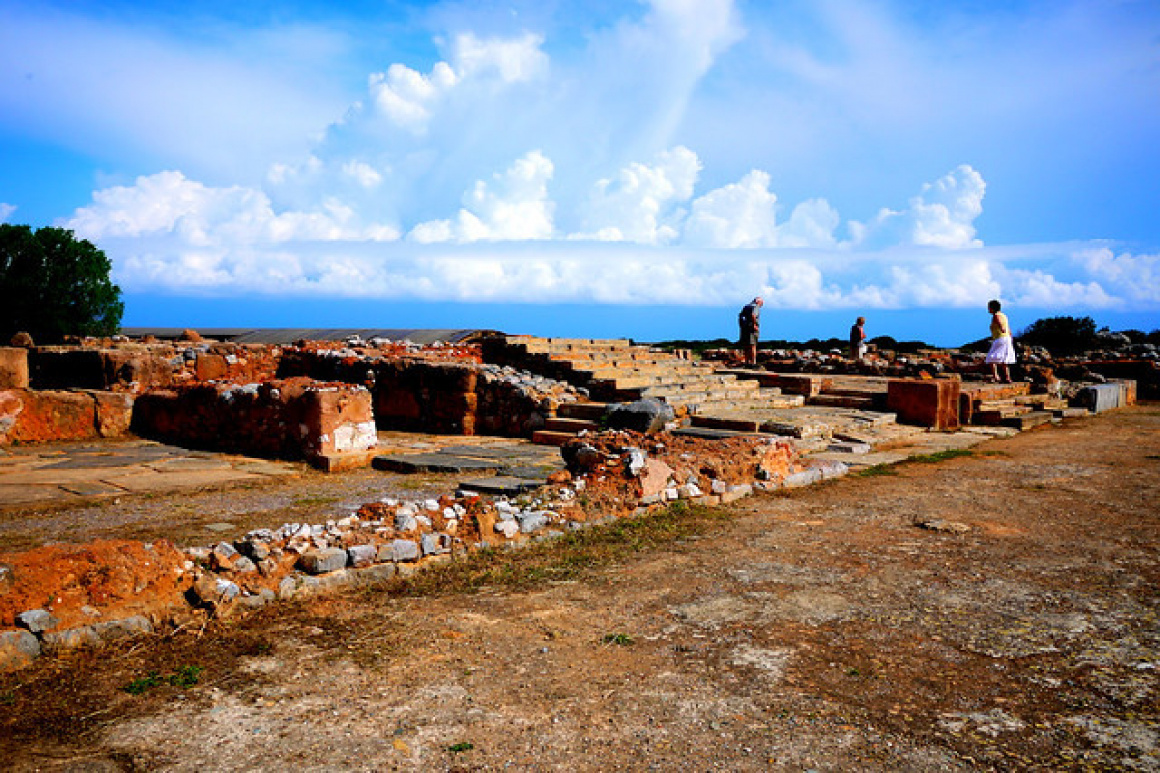On Crete's northern shore, where party-goers now flock to beach bars and neon clubs, an ancient secret rests by the sea. The Malia Palace archaeological site is a window into the island's Bronze Age heyday – a time of mighty kings and intricate palaces long before Zeus or Apollo were worshipped. Arriving at Malia Palace in the early morning, you might catch a mist lifting off the distant Lasithi Mountains and the scent of wild oregano in the air. The wide expanse of ruins, just inland from today's resort town, feels serene. Stone foundations outline storerooms and courts, giant clay pots lie half-buried where they stood millennia ago, and swallows nest in long-deserted corridors. It's hard to believe that only a short distance away is modern Malia's bustle, because here at the palace, there's a sense of timelessness. If you listen closely (preferably ignoring the faint thump of distant bass on a summer night), you might imagine the footfalls of sandaled priests and the whispered prayers to Minoan gods. Malia Palace offers a fascinating contrast: ancient Minoan splendor amidst a very contemporary holiday scene.
A Place of Legends and Rulers
According to myth, Malia was the domain of King Sarpedon, who was the brother of the famous King Minos of Knossos Palace. Legend says Zeus and Europa (yes, the same Europa connected to Gortyna's myth) had three sons who divided Crete among them – Minos ruled Knossos, Rhadamanthus ruled Phaistos, and Sarpedon ruled over Malia. Whether Sarpedon actually existed is lost to time, but the myth underlines that Malia was considered one of the three key power centers of Crete in ancient memory. Indeed, archaeologically, we know the palace of Malia was the third largest Minoan palace on Crete, spanning about 7,500 square meters. It rose around 1900 BC during the Protopalatial period (the first palace era) and, like other Minoan sites, was likely destroyed and rebuilt, with the ruins today mainly from the Neopalatial era (1700–1450 BC).
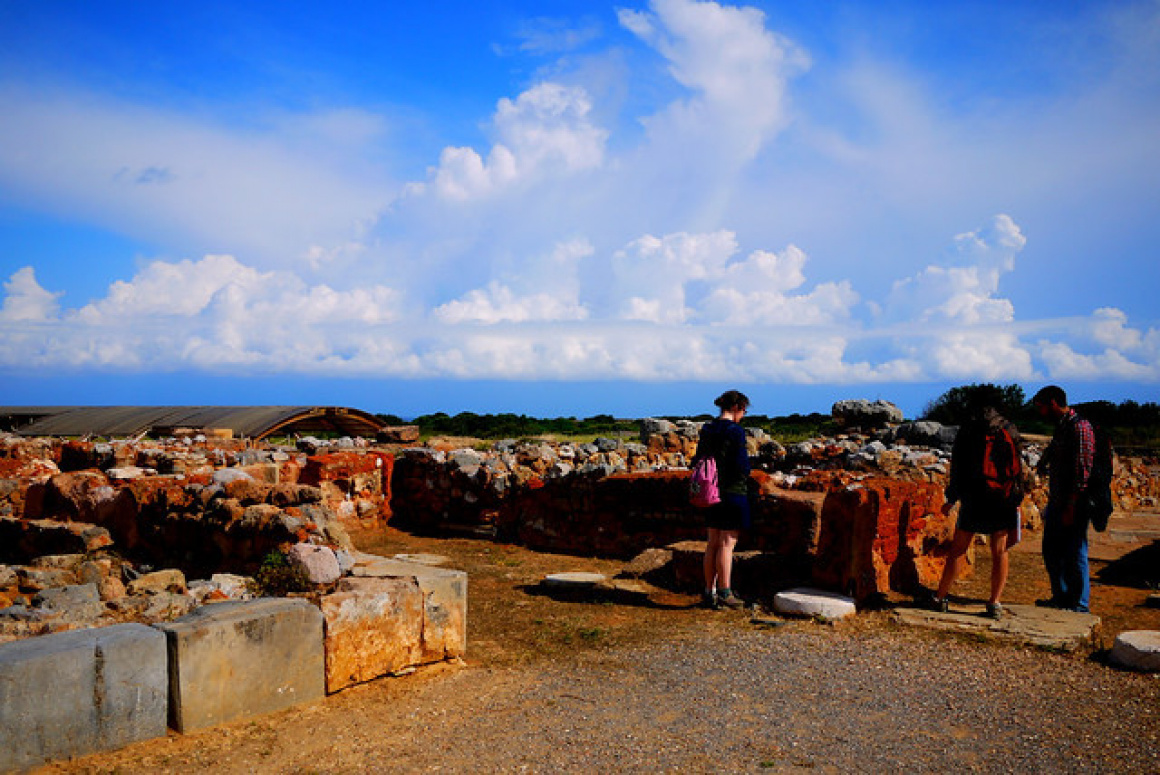
 '12410' - Attribution: Panegyrics of Granovetter
'12410' - Attribution: Panegyrics of GranovetterMalia was a thriving coastal hub. Its location near fertile plains and the sea made it ideal for both agriculture and maritime trade. Archaeologists have found evidence of wine and olive oil production, and the remains of workshops for pottery and metallurgy. As you wander, you might notice how close the sea is – in antiquity the shoreline may have been even nearer. Malia likely had a port or harbor area serving the palace, facilitating trade with Egypt, the Near East, and other Aegean islands. When you stand in the central court, imagine ships docking nearby loaded with copper from Cyprus or fine pottery from Santorini, to be offloaded and stored in the palace magazines.
Historically, the palace's life ended around 1450 BC (like Phaistos and other Minoan sites) due to either conquest by Mycenaeans from mainland Greece or a natural disaster chain reaction from the Thera eruption. The palace was not rebuilt after that, but a Greek (Dorian) town later developed a bit to the east in classical times. However, those later layers are sparse compared to the rich Minoan remains.
Highlights of the Palace Site
The Central Courtyard is a natural starting point – a large rectangular open space that was the ceremonial and social heart of the palace, measuring about 48 by 23 meters. Stand here and turn slowly to take in the full 360° of the site:
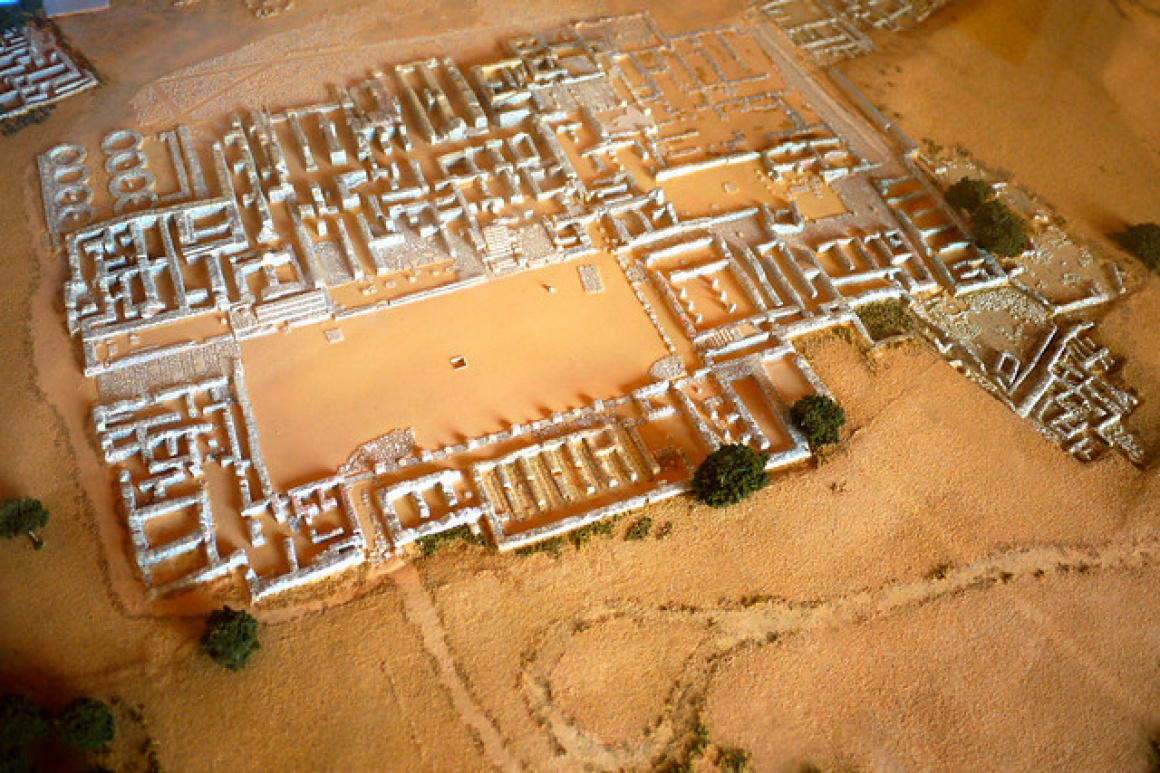
 '12406' - Attribution: Panegyrics of Granovetter
'12406' - Attribution: Panegyrics of GranovetterThe courtyard's flagstones are mostly gone, but a few remain in situ. Envision vibrant processions crossing these stones, perhaps part of religious festivals – Minoan art often depicts people carrying offerings or leading sacrificial animals, likely en route to places like this very courtyard.
One distinctive feature at Malia is the presence of a large circular stone with carved indentations, found in the northwest corner of the palace. This is a kernos – a ritual stone used to offer liquids or grains to the gods. The one at Malia has multiple little carved cups; priests may have poured libations of wine or placed seeds in them as part of ceremonies. It sits right in the open; you can walk up to it and touch an object that was used in sacred rites 3,500 years ago.
Moving west from the court, you enter the West Wing, home to extensive storage magazines. Here, archaeologists found rows of giant clay pithoi (storage jars). Many still remain – half-buried jar bases fixed in the earth, their enormous girth giving a sense of scale. These pithoi could hold hundreds of liters of olive oil, wine, or grain each. Running your hand along their rim, you can almost sense the volume of goods that once passed through this palace. The storerooms are narrow, with low stone walls marking their boundaries, and some still have the raised stone borders of what were likely clay floors or wooden platforms. This arrangement is very similar to the storage areas in Knossos and Phaistos, underscoring a shared architectural plan across Minoan palaces.
Near the storerooms, look for a small staircase remnant – this hints at an upper floor. Unlike Knossos, which had parts reconstructed by Arthur Evans, Malia's ruins are kept largely as found, so you have to imagine the multi-story buildings from clues. A few column bases and sections of paved floors suggest that significant parts of the palace rose two or even three stories high, especially around the central court and the royal apartments.
On the north side of the site, you'll find what is interpreted as the Royal Apartments. Here, there are remains of a grand staircase (leading to where an upper floor would have been) and a room with a sunken lustral basin – presumably for ceremonial bathing or purification of the high priestess or king. Fragments of colorful plaster were found here, indicating the walls were once adorned with frescoes. Though none survive in place, a few decorative pieces found (now in the Heraklion Archaeological Museum) show patterns of red ochre and blue, typical Minoan colors that would have enlivened these rooms. It's a bit mind-boggling to stand in what might have been the throne room or queen's megaron, now open to the sky, and picture it with a timber roof, rich wall paintings, and elaborate wooden furniture.
On the east side of the palace, foundations extend outward that belonged to the Palace Annex or Town – because the palace complex wasn't isolated; it was surrounded by a city. In fact, the French archaeologists who excavate Malia have uncovered streets and houses of the Minoan town adjacent to the palace. One of these houses, outside the main palace grounds, turned out to be a tomb area called Chrysolakkos (meaning "Golden Pit"). It's here that Malia's most famous treasure was found: the solid gold Bee Pendant. This stunning piece of jewelry, depicting two bees (or wasps) holding a drop of honey, was discovered in 1930 in a tomb near the palace. It dates to around 1800 BC and is now on display in the Heraklion Archaeological Museum. The find spot underscores that the elites of Malia were buried with high honors and riches. Though you can't see the original pendant at the site, sometimes a replica or an image of it is shown on info panels – it's a proud symbol of Malia's sophistication in art and craftsmanship.
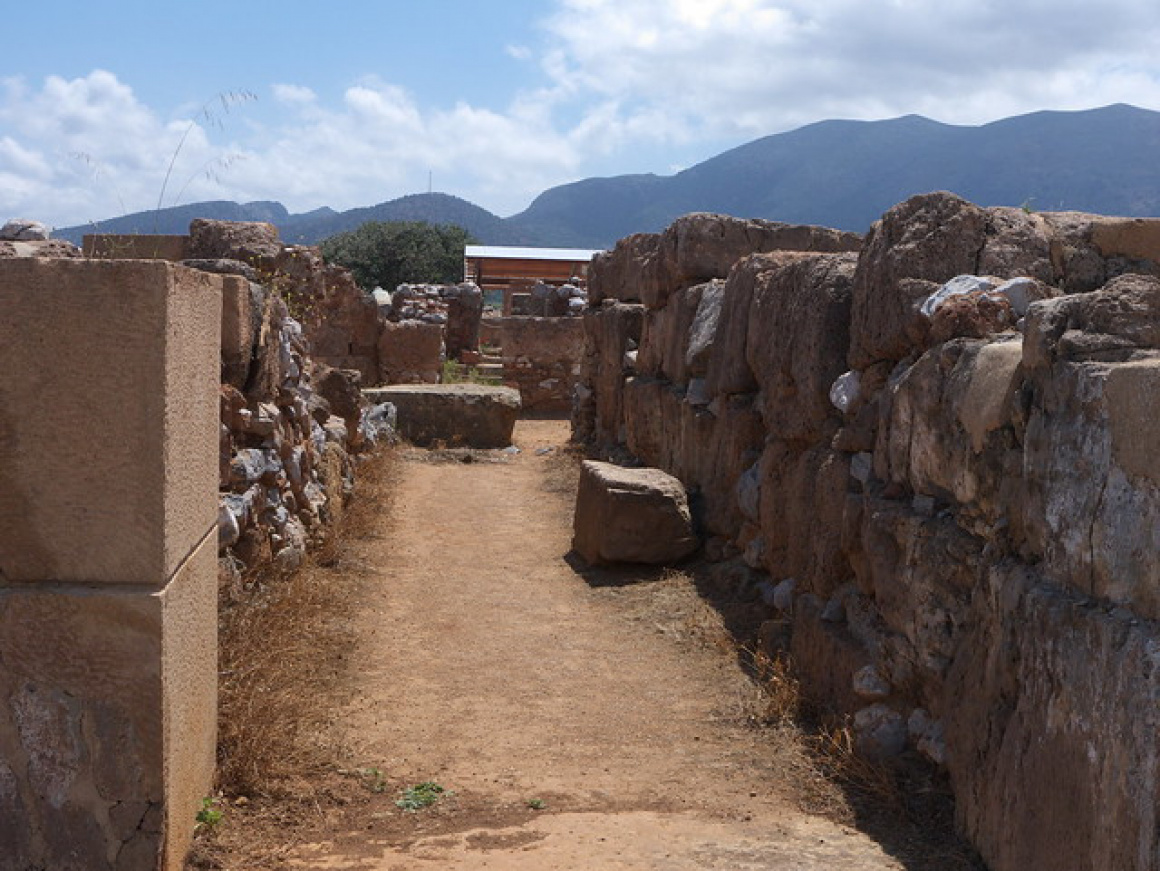
 'Palace of Malia' - Attribution: Tim Schofield
'Palace of Malia' - Attribution: Tim SchofieldInterestingly, the palace also shows evidence of daily industrial life. Archaeologists identified areas that were likely workshops for making pottery and possibly metalworking. Molds for casting, stone blades, and unfinished artifacts found on-site reveal that Malia was not just ritually and administratively active, but also a production center.
Location
The Malia Palace site (also marked as the Minoan Palace of Malia) is about 3 km east of modern Malia town, along the old national road towards Sissi. It's well-signposted from town. If you're staying in the Malia/Hersonissos area, it's a quick drive or even a bike ride. From Heraklion, it's roughly 35 km (a 40-minute drive) east on the highway (take the “Malia” exit). There's a parking area by the entrance.
Hours & Entry
The site is open daily, typically 8:00 to 20:00 in summer (April–October) and shorter hours in winter. Last entry is usually 15 minutes before closing. The entrance fee is around €6 (or combined in a package with other sites like Knossos Palace and its museum if you plan those). Because the site is largely flat and open-air, it can be very hot under the midday sun – plan a morning or late afternoon visit during July/August. There's a small guard office at the entrance where you get tickets; they also have site brochures in a few languages that outline the palace layout – worth grabbing as there aren't too many detailed signs once inside.
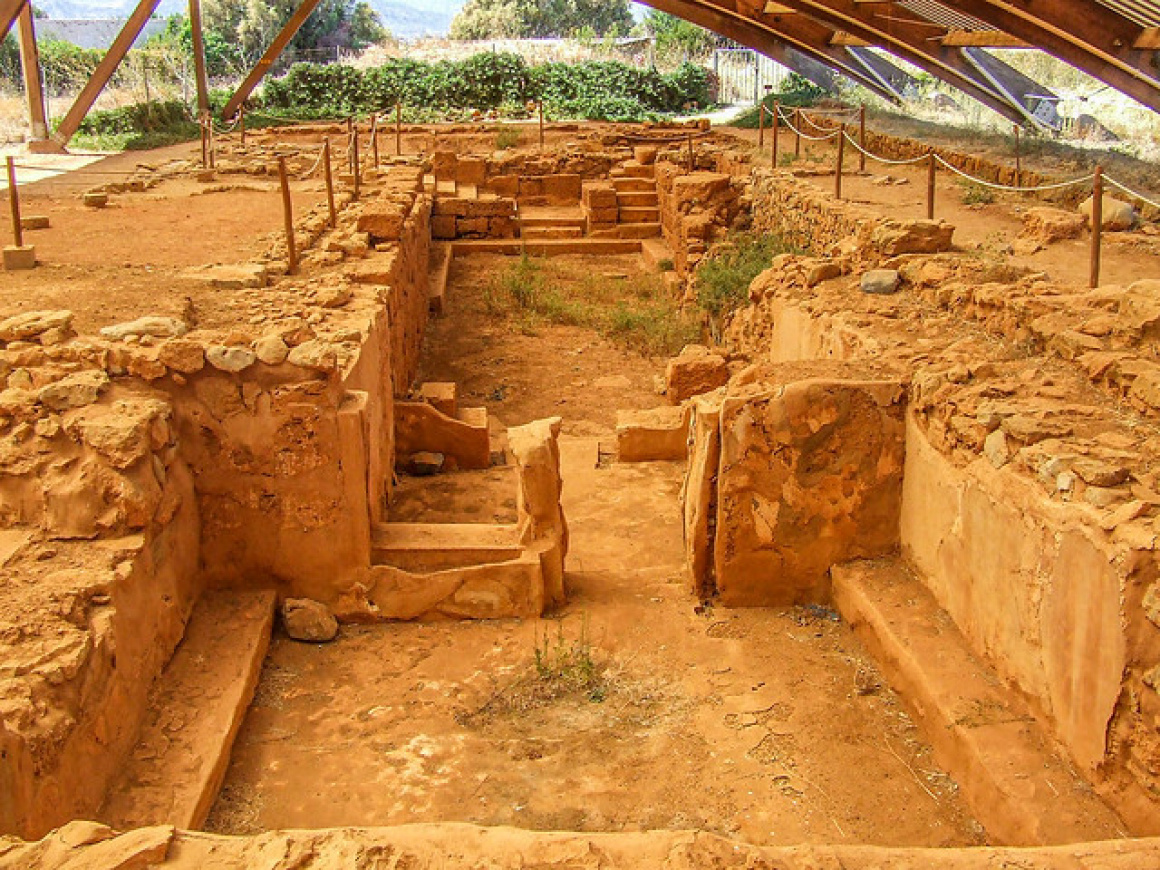
 'Malia Palace Archaeological Site' - Attribution: www.mgaylard.co.uk and thanks for looking
'Malia Palace Archaeological Site' - Attribution: www.mgaylard.co.uk and thanks for lookingAmenities
Near the ticket booth, there's a little shop selling souvenirs and cold drinks, and toilets for visitors. Unlike Knossos, there's no café on-site, but in summer sometimes a cantina might be operating outside the gate for snacks. The paths through the ruins are mostly dirt or gravel; wearing closed-toe shoes is smart to avoid stubbed toes on rocks. The site is fairly level, so it's not a hard walk, but if you want to see the town ruins beyond, be ready for a bit of uneven ground.
Guides and Info
Malia doesn't have on-site guides milling about like Knossos often does. If you want a guided tour, you'd likely need to arrange one through a tour operator or hire a private guide from Heraklion. That said, many info boards are placed at key points (with English text) describing what you're looking at, which is very helpful. Still, using a guidebook or app can enrich your visit – hearing about the Bee Pendant discovery, or how the palace's ceiling might have looked, can make the stones come alive.
Best Time to Visit
Early morning at Malia is fantastic – you might be one of very few people there when it opens. The light is soft, and you can wander peacefully. Tour groups occasionally come through, but it's nowhere near as busy as Knossos Palace. If you're staying in Malia's resorts, note that a sunrise or sunset visit (if you arrange entry accordingly) could be magical – though normal opening hours don't include sunrise/sunset times, sometimes special arrangements or events do happen at the site (check if any evening cultural events are scheduled in summer).
Combining Activities
A great thing about Malia Palace is its proximity to other attractions. A mere 10-minute drive north brings you to the quaint fishing village of Sissi, where you can have a seafood lunch by a lovely harbor after your history fix. Also, the bustling Malia beach strip is just to the west – you could literally go from bronze-age ruins to a sandy beach in the same morning. If you're up for more adventure, the scenic Lassithi Plateau (with its windmills and the Diktaean Cave – the legendary birthplace of Zeus) is a mountain drive to the south and makes an excellent day trip paired with the palace.
Visitor Etiquette
As with all ruins, please don't climb on the fragile walls or touch the artifacts. Malia's site has roped-off areas but also open sections; respect any barriers. It's tempting to step into the lustral basin or pick up a piece of pottery lying about, but refrain – even small actions can damage the site or violate preservation rules. Also, Malia is home to many lizards and the odd snake; they are harmless, but be mindful when stepping in overgrown spots.
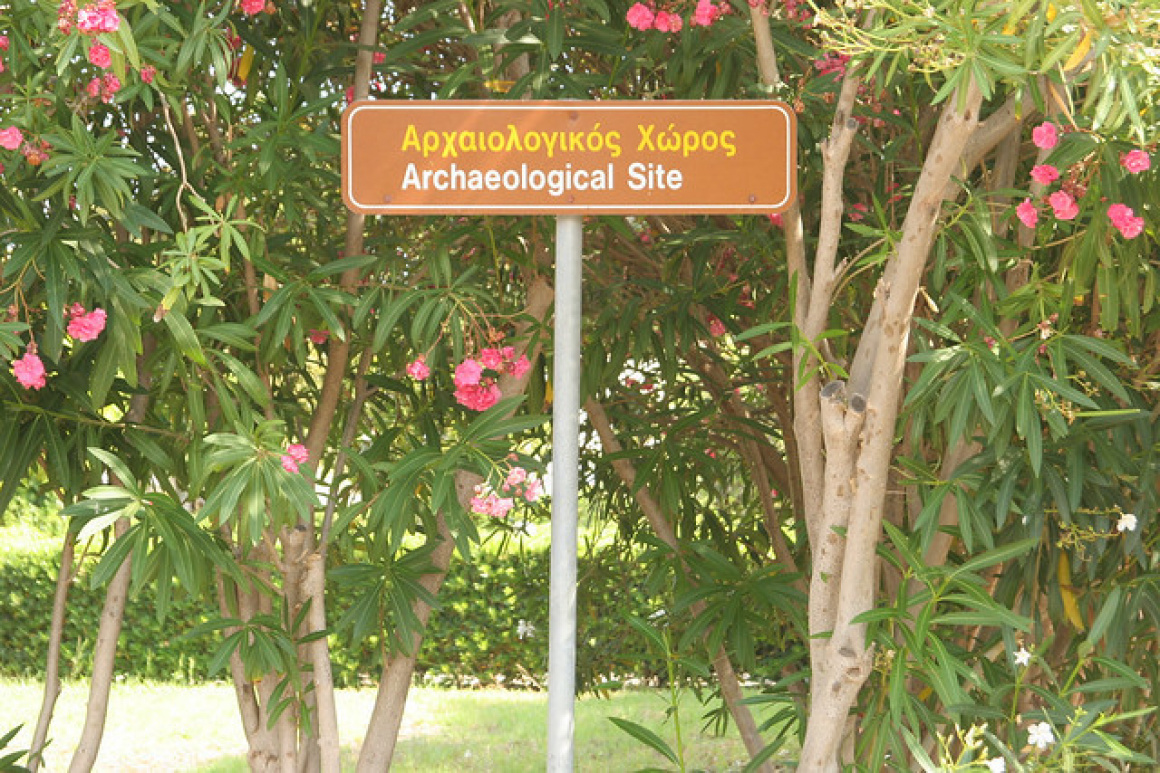
 '.' - Attribution: Alexander Baranov
'.' - Attribution: Alexander BaranovModern Malia has a reputation for nightlife and package tourism, which is worlds apart from the ancient culture that once thrived here. But for curious travelers, that contrast can be part of the fun. One minute you're pondering an ancient script or the meaning of a cult vessel, and an hour later you might be plunging into the sea or enjoying a cocktail. Locals are quite proud of the palace (many have grandparents who assisted the French archaeologists in digs). You might notice some tavernas or bars with names inspired by Minoan heritage – subtle nods to the town's ancient past. If you get a chance to talk to a local older than 50, ask if they remember the excavations or any stories about the palace being found. Malia was first excavated in 1915 by a Greek archaeologist, then more systematically from 1922 by the French School of Archaeology, and work continues off and on. There's often a sense in Malia that treasures might still lie beneath the soil; indeed, to the east, they keep discovering more of the Minoan town.
One delightful aspect when visiting is to consider how close the palace was to the coastline. Walk a few hundred meters north from the site (toward the modern road) and you'll come to a small beach cove called Potamos Beach – quiet and undeveloped. It's easy to imagine Minoan boats drawn up here. In fact, after seeing the ruins, a dip in the Aegean at Potamos Beach can be a refreshing way to connect with the landscape as the ancients did. You're literally swimming in the same waters that Malia's people sailed, perhaps carrying that Bee Pendant as an offering or trading goods with far-off lands.
The Minoan Bee Pendant, though now in a museum, has become a symbol of Malia. It represents cooperation (two bees working together) and abundance (a honey drop). While at the site, envision the kind of artisans who could create such a detailed gold piece in an age with no modern tools – it speaks to a high level of skill and artistry. And that is what Malia was: not just an administrative center, but a place where art, religion, and daily life intersected richly.
Finally, don't leave without climbing the small viewing platform that the site provides (often a raised wooden deck or similar near the center). It gives an elevated perspective of the ruins, helpful to grasp the overall layout. As you survey the palace from above, with the Cretan sea gleaming beyond, you might appreciate why the Minoans chose this spot: strategic, beautiful, and nourishing. Malia Palace, in its ruined splendor, still nourishes the imagination of those who visit.
After Malia, if you're continuing your Minoan trail, consider heading to Knossos Palace for the grand finale of Minoan sites, or venture east to Zakros Palace for a more remote ruin experience. And for a change of pace, our Best Sunset Spots guide can point you to an evening spectacle – perhaps even from Malia's own beach as the sun sinks beyond the bay.


